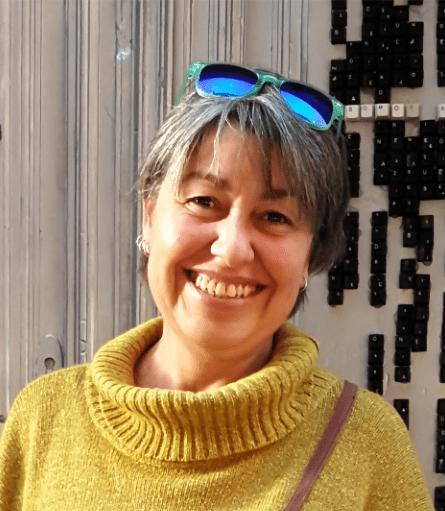
Sonia De Viana
Above all, but not only, I re-construct objects that usually contain text, although not always. More than twenty years of written journalism, nearly fifty reading, watching, and growing up among bricklayers and carpenters have led me to mix letters and sculpture (also photography), content and continents. The vast majority of my materials are small discarded everyday objects, and my favorite technique for working with them is the method of music artists Rafael de León and Lola Flores.
I am more interested in ideas than executions, because things do not have to continue being the way they always have been for a longer time, and because of the vast variety of materials and destinations, I call my pieces “artistismos”. They generally provoke a smile.
I have always enjoyed building things with my hands, perhaps influenced by growing up with a father who was a bricklayer and carpenter. And I have always been a curious and imaginative person, so I tend to “see” other facets in the objects and materials I come across. In 2015, I spent some time at my family home in a village in the Spanish countryside (I have lived in Madrid for over 30 years) and, among dozens of other crafts, I decided to try typing on fabric to slow down the pace of life, relieve stress and stop staring at screens. Since then, I have been playing with broken or disused items in my both houses, combining them or transforming their purpose.
Craft projects
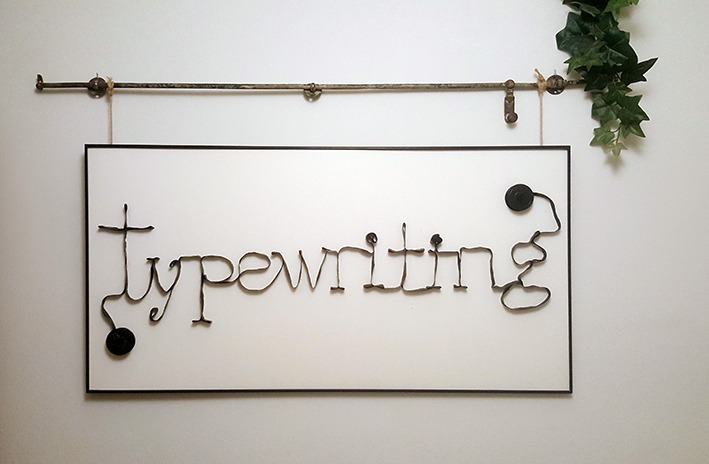
Manografiado
Used typewriter ribbon held on its 0.5 mm thick profile, hardened with various successive techniques (lacquers, starch and finally Paraloid acrylic resin) to sculpt with invented script typography the single word that defines the origin of the original material.
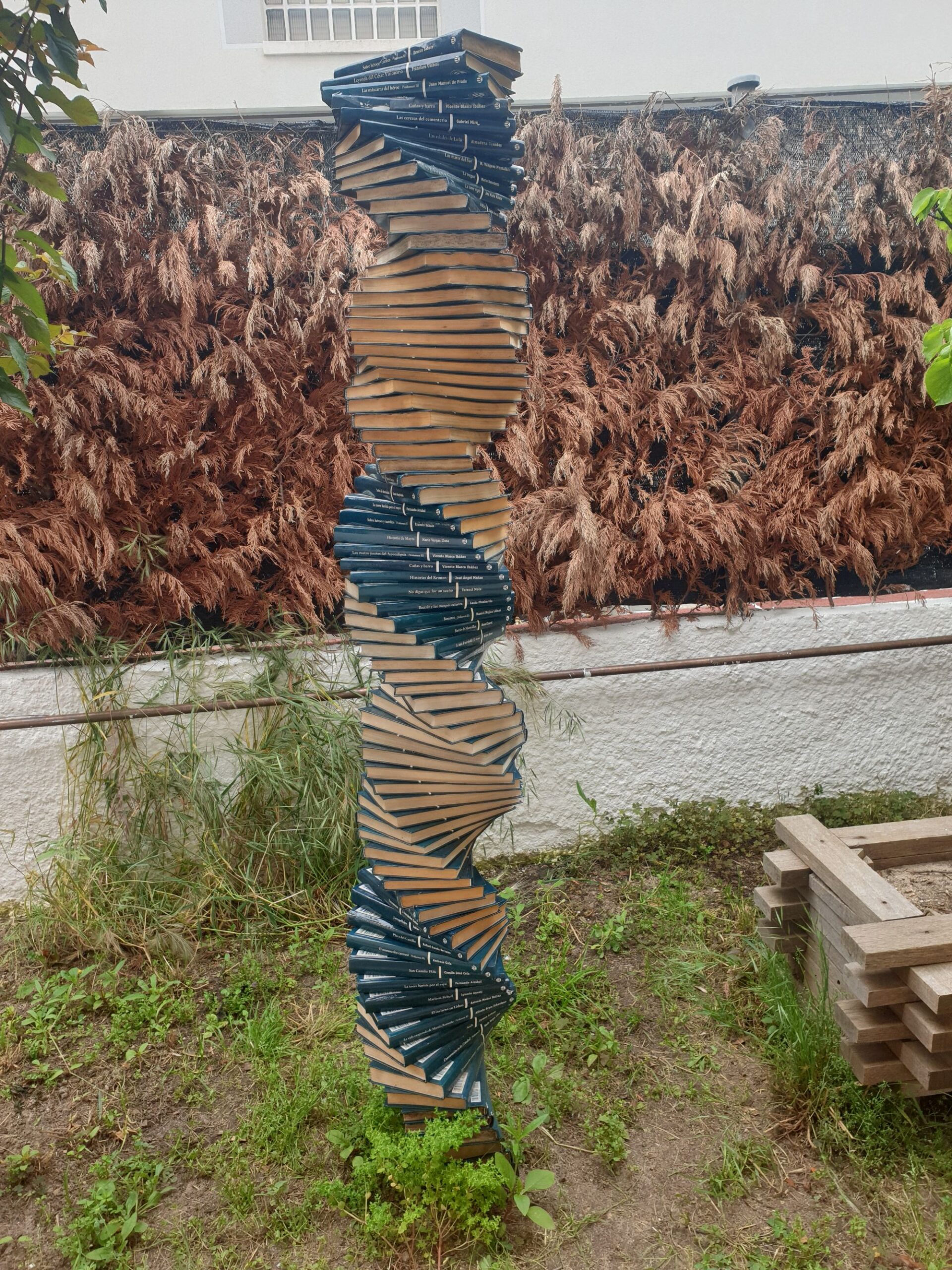
Solomonic literature
Solomonic column sculpture with a collection of discarded books.
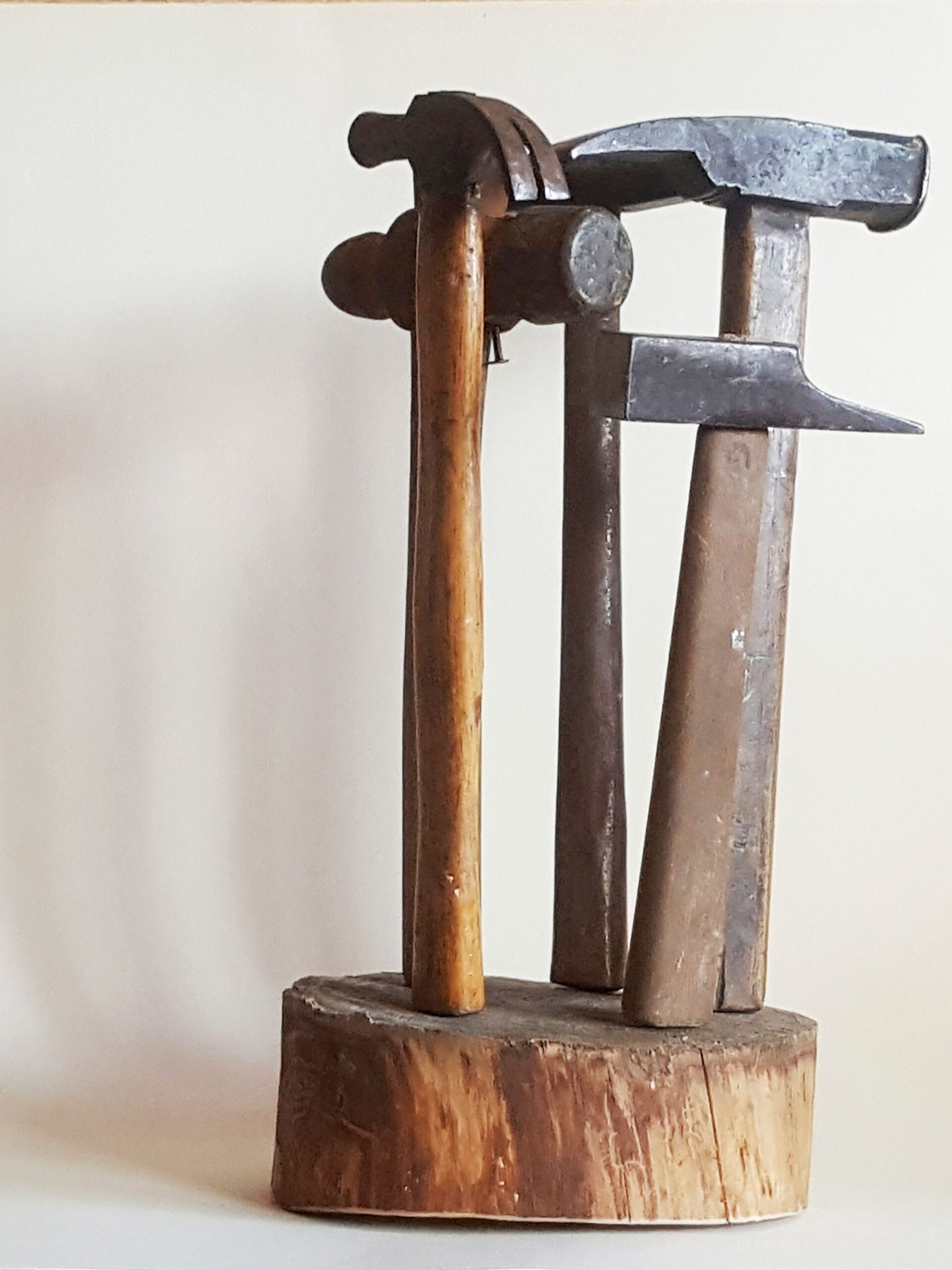
Hammered Forest
‘If you were born to be a hammer, nails will fall from the sky,’ recites Rubén Blades in the famous ‘Pedro Navaja,’ setting to music a traditional aphorism that could well be accompanied by this other one: ‘If life gives you lemons, make lemonade.’
Physically, the piece was conceived organically, slowly simmering and even lying fallow, allowing the different hammers (chisel, claw, ball, cabinetmaker’s, tanner’s…) that, by chance and rummaging, gradually gathered on the table in her workshop to breathe and align themselves, group together and, finally, stand upright.
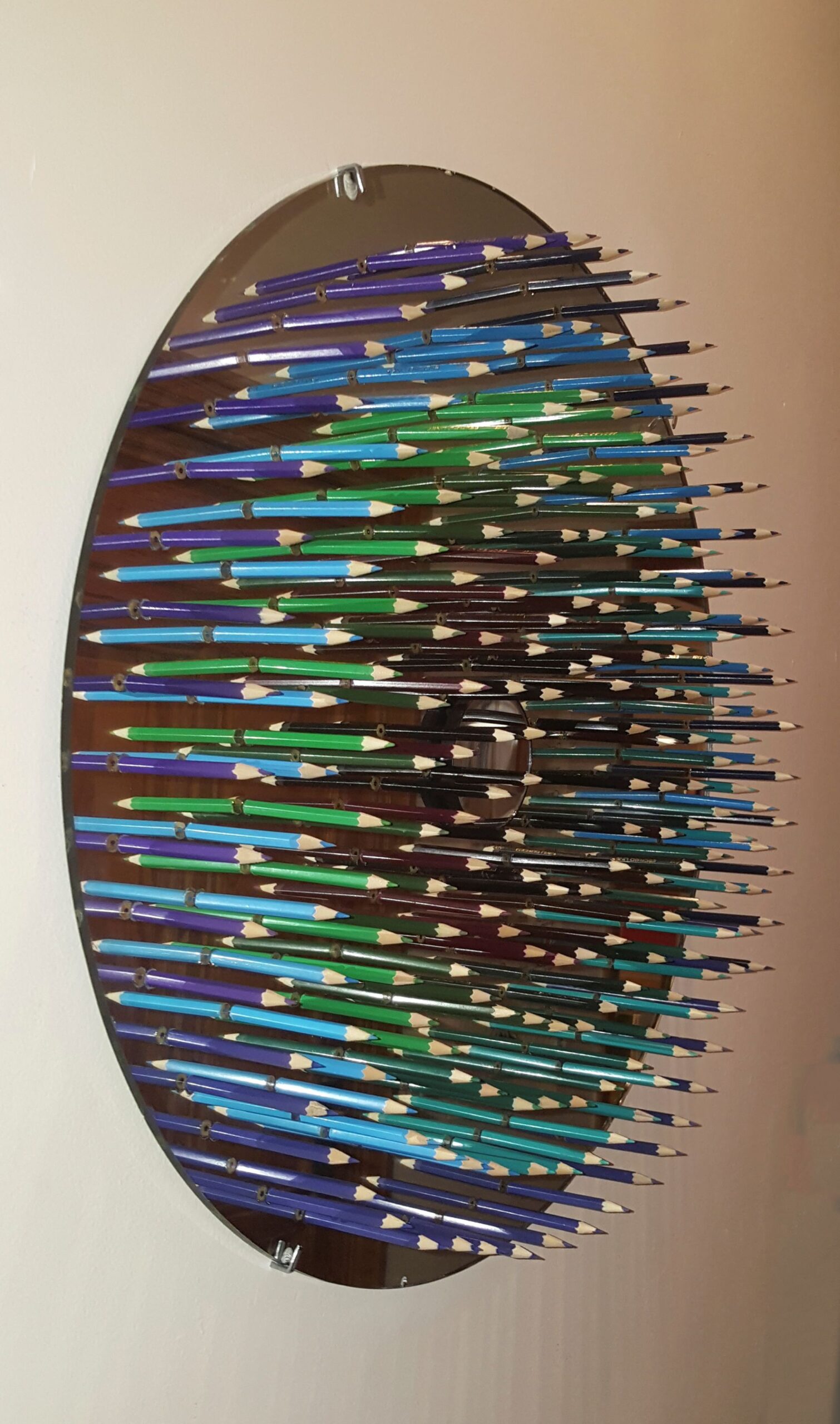
Vanitas vanitatis (The folly of idiocy)
Sharp wooden pencils in muted colours, arranged in a harmonious spiral gradient, assault the narcissist, the egomaniac, the conceited, the vacuous, with no escape from their reflected image: in the end, they will inevitably be riddled with holes, in real life and in their unreal mirror image.
